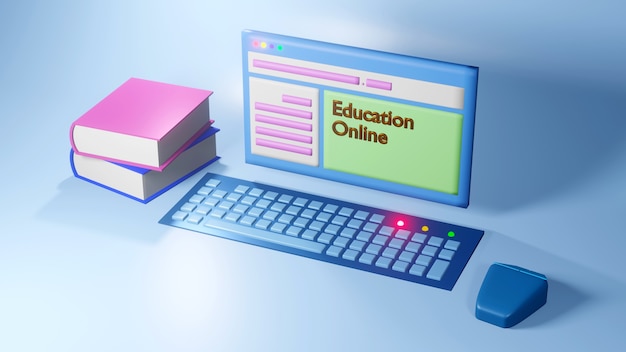Curriculum Transparency in US Schools: Recent Developments and the Push for Open Education

Recent developments in the push for curriculum transparency in US schools reflect a growing demand from parents and communities to understand what is being taught in classrooms, aiming to foster greater accountability and engagement in education.
The movement for recent developments: the push for curriculum transparency in US schools has gained significant momentum, sparking debates and policy changes across the nation. This drive aims to provide parents and the community with a clear understanding of what is being taught in classrooms, ensuring they can actively participate in their children’s education.
Understanding Curriculum Transparency
Curriculum transparency involves making detailed information about what is taught in schools accessible to parents, guardians, and the community. This includes lesson plans, textbooks, supplemental materials, and the overall educational philosophy guiding the curriculum.
What Information is Typically Included?
The specifics of what is disclosed can vary, but often include:
- Detailed lesson plans for each subject.
- Lists of required and recommended reading materials.
- Information on assessment methods and grading policies.
- Access to any digital resources or platforms used in the classroom.
Why is Transparency Important?
Proponents of curriculum transparency argue that it promotes accountability, enhances parental involvement, and fosters trust between schools and the community.

Ultimately, understanding curriculum transparency helps parents and educators work together to create the best possible learning environment for students.
The Rise of Curriculum Transparency Legislation
In recent years, several states have introduced or passed legislation mandating curriculum transparency. These laws often require schools to post curricular materials online or make them readily available upon request.
These laws are not without their challenges, as school districts grapple with the logistics of implementing these new requirements.
Key Provisions in Transparency Laws
The provisions typically include:
- Mandatory posting of curriculum materials online.
- Requirements for schools to provide parents with access to lesson plans and syllabi.
- Guidelines on how to handle sensitive or copyrighted materials.
Examples of States Leading the Way
States like Florida, Arizona, and Iowa have implemented curriculum transparency measures, each with its own unique approach.
The push for curriculum transparency through legislation reflects a broader trend of increased parental involvement and oversight in education.
Arguments For and Against Curriculum Transparency
Curriculum transparency is a complex issue with passionate advocates on both sides of the debate. Proponents argue it empowers parents and improves education, while opponents express concerns about potential overreach and politicization.
Understanding the nuances of these arguments is essential for a balanced perspective.
Arguments in Favor of Transparency
Those in favor of curriculum transparency often highlight the following benefits:
- Increased parental involvement in education.
- Greater accountability for teachers and school administrators.
- Improved alignment between curriculum and community values.
- A stronger foundation of trust between schools and families.
Arguments Against Transparency
Conversely, opponents raise concerns like:
- Increased workload for teachers and administrators.
- Potential for political interference in curriculum development.
- Exposure of sensitive or copyrighted materials.
- The possibility of parents misinterpreting or misusing curricular information.

Ultimately, the debate surrounding curriculum transparency reflects differing visions of the role of parents, educators, and policymakers in shaping education.
Challenges in Implementing Curriculum Transparency
Implementing curriculum transparency is not without its challenges. Schools and districts must navigate logistical, technological, and pedagogical hurdles to effectively share curricular information.
Technological Infrastructure
Many schools lack the necessary technology infrastructure to efficiently post and manage curricular materials online.
Teacher Workload
The burden of documenting and organizing curriculum information can add to already heavy teacher workloads.
Protecting Sensitive Information
Schools must find ways to protect sensitive student data and copyrighted materials while still providing meaningful transparency.
By proactively addressing these challenges, schools can ensure that curriculum transparency efforts are successful and sustainable.
The Role of Technology in Enhancing Transparency
Technology plays a crucial role in facilitating curriculum transparency. Online portals, digital platforms, and data management systems can streamline the process of sharing information and engaging parents.
Online Portals and Learning Management Systems
Many schools are leveraging online portals and learning management systems to provide parents with easy access to curriculum materials, assignments, and grades.
Data Analytics and Visualization
Data analytics tools can help schools track student progress and identify areas where curriculum adjustments may be needed.
Communication Tools
Communication tools like email, newsletters, and social media can keep parents informed about curriculum updates and school events.
By embracing technology, schools can make curriculum transparency more efficient, accessible, and engaging.
The Future of Curriculum Transparency
The push for curriculum transparency is likely to continue shaping education policy and practice in the years to come. As technology evolves and parental expectations change, schools will need to adapt and innovate to meet the demands of a more transparent educational landscape.
Emerging Trends
Several emerging trends are likely to influence the future of curriculum transparency, including:
- Increased use of open educational resources (OER).
- Greater emphasis on personalized learning and competency-based education.
- Growing demand for culturally responsive and inclusive curriculum.
- The rise of micro-credentials and alternative pathways to education.
The Importance of Collaboration
Collaboration between parents, educators, and policymakers will be essential to ensuring that curriculum transparency efforts are effective and beneficial for all students.
The future of curriculum transparency hinges on a shared commitment to open communication, collaboration, and continuous improvement.
| Key Point | Brief Description |
|---|---|
| 📣 Transparency Defined | Detailed access to school curricula for parents and communities. |
| ⚖️ Legislation | States are enacting transparency laws, requiring online access to curricula. |
| 👍 Pro Arguments | Enhances involvement, accountability, and trust between schools and families. |
| 🚧 Challenges | Implementation faces tech gaps, teacher workload, and data protection issues. |
Frequently Asked Questions
▼
Curriculum transparency refers to the practice of making school curricula openly available to parents, guardians, and the community. This includes lesson plans, learning materials, and educational goals.
▼
It promotes parental involvement and accountability in the education system. By knowing what their children are learning, parents can better support their educational journey at home.
▼
Concerns include increased workload for teachers, potential politicization of curriculum, and privacy issues regarding sensitive student or copyrighted materials.
▼
Schools may use online portals, learning management systems, or public access policies to share curriculum information with parents and the community, making it easily accessible and understandable.
▼
The trend is likely to continue, with increasing use of technology and open educational resources. Greater collaboration among parents, educators, and policymakers is crucial for success.
Conclusion
The push for curriculum transparency in US schools is a multifaceted movement with the potential to reshape the educational landscape. While challenges remain, the drive for greater openness and collaboration offers a path toward a more engaged and accountable educational system.





